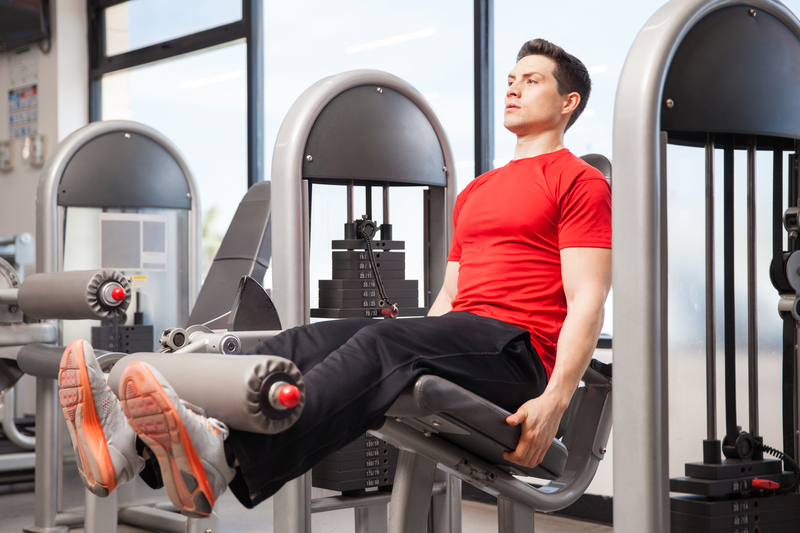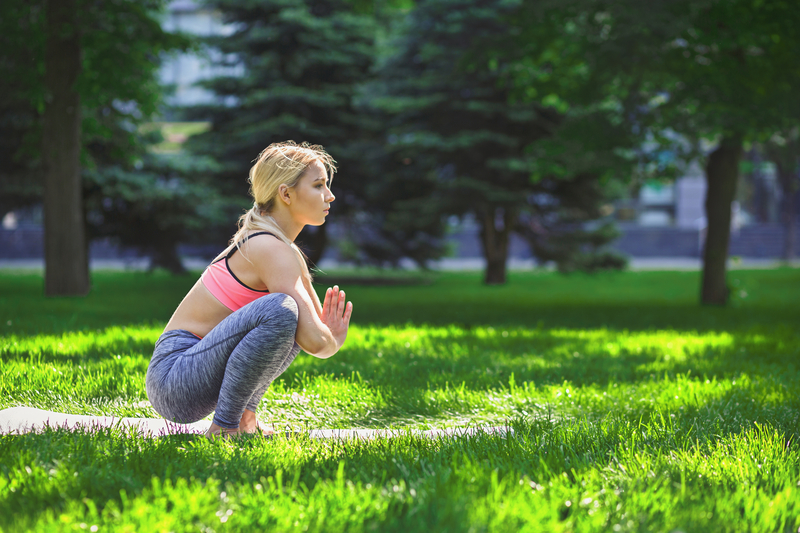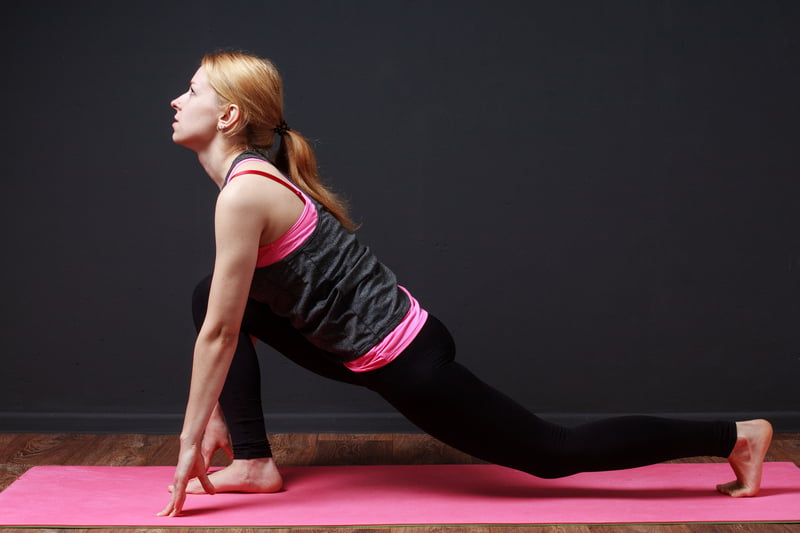7 Knee-Strengthening Exercises You Need to Be Doing

No matter your age, everyone can relate to the importance of knees and the significance of avoiding knee pain. But, how do you keep your knees strong in the face of everyday use? Read on! As with any major joint, strengthening the knees will help you strengthen your body overall. Because your knees are so intimately involved in so many movements, it stands to reason that regularly utilizing knee-strengthening exercises can really help your progress in strengthening other areas of your body as well.
What, Exactly, is the Knee?
The knee joint is one of the biggest joints in the body and both stabilizes and supports the body. It’s what connects your upper leg (the femur or thigh bone) to your lower leg (the tibia or shin bone and the fibula) and is covered by a triangular shaped bone called the patella, otherwise known as the kneecap.
On the outside edge of the knee is what’s called the lateral meniscus with the medial meniscus on the inside edge of the knee. These pads of cartilage serve as cushions, and all aspects of the knee are surrounded by synovial fluid, a mechanism designed to help lubricate the joint. Your knee joint also has fluid-filled pouches called bursa that help further reduce friction between bones and protect the structure of the joint.
Next are the stabilizing ligaments that help hold the entire joint together. They are the MCL (medial collateral ligament on the inside area of the knee), the LCL (lateral collateral ligament which supports the outer section of the knee), the ACL in the center of the knee (the anterior cruciate ligament which prevents excess forward movement) and the PCL (posterior cruciate ligament which restricts backward movement).
Lastly, the entire joint is joined together with the remaining muscles of the leg, namely the hamstrings and calf muscles (in back) and the quadriceps (in front). As you can see, there are a lot of moving parts when it comes to the knee, and keeping them strong and flexible is vital if you want to lead an injury-free lifestyle without restriction and pain.
What are the uses of the Knee Joint?
The knees are pretty incredible joints in their multifunctional capacities. Not only do they help you stand, but they help you move your body through various planes as well: vertically, horizontally, and diagonally.
Our Top 7 Knee-Strengthening Exercises
1. Reverse Calf Raises
These might seem simple, and let’s say yes, they are simple… but these knee-strengthening exercises are not easy. Start by standing and leaning slightly backwards onto a wall, keeping your legs straight. Next, ease back onto your heels as you lift your toes straight up off the ground. Hold this position for a count of three and release back to the ground. Repeat ten times.
2. Leg Extensions

These can be performed on a machine at a fitness facility or while sitting on a chair if you don’t have access to gym equipment. If on gym equipment, sit on the machine and place your feet behind the ankle pad. Lift your feet up toward the ceiling as you extend your legs until they are straight. Squeeze your quad muscles at the top of this exercise for a full five seconds before slowing returning the legs to the starting position.
If you are doing this exercise at home, simply sit in a chair with your feet flat on the floor. Straighten your legs as you grip the sides of the chair and hold the movement at the top, building up to 60 seconds. Slowly bend at the knees to return to the start and repeat.
3. Wall Squats

This exercise is like sitting in a chair without a seat. Start by standing with your back against the wall and your feet about hip-width apart. Place your hands lightly on your thighs as you bend at the knees to lower your body into a squat position. Once your legs are bent at 90 degrees, hold the squat position for up to 60 seconds. Push back up through your heels to return to standing and repeat.
4. Deep Body Squats

These knee-strengthening exercises are similar to a body squat except you will go way past squatting parallel and bring your hips all the way toward the ground. This allows your knee a full range of motion and lets the stabilizers do their jobs throughout the movement. Start by standing with your feet a bit wider than shoulder-width apart. With your hands clasped in front of your chest, bend at the knees, and lower your hips all the way to the ground. Sit in this position for a moment before returning to standing and repeat.
5. Step Ups

These might remind you of the old step aerobic workouts and with good reason. It’s the same principle of stepping up onto a raised platform with your right leg, straightening your leg, and bringing your trailing left leg up behind you. Once your right leg is fully straightened and you’re standing on the platform, tap your left foot on the platform before stepping back onto your left foot. Lastly, step down with your right foot. Do ten repetitions and then repeat the sequence on the opposite side.
6. Deep-Forward Lunges

While you may have been told to “never go past a 90-degree bend,” it turns out that your knees will thank you for taking them all the way forward. Start by standing with your feet about hips-width apart and your hands on your hips. Take a giant step forward with your right leg and lean all the way forward until your knee won’t bend any further. Push back up to standing through your heel and then repeat on the opposite side.
7. Duck Walk

This exercise is the real deal! This is an advanced move and one of the best knee-strengthening exercises you can do. Start by crouching down into a squat with your hips low between your bent knees. You’ll probably want to clasp your hands in front of you for balance. Next, lift your right foot (as much as you can) and take a mini step forward. Repeat on the opposite side so that are “walking” forward like a duck. Go as far as you are comfortable going, rest, and then repeat the process.




 7 Signs Your Body is Seriously Low on Collagen (not just wrinkles)
7 Signs Your Body is Seriously Low on Collagen (not just wrinkles) Health Expert: "Turmeric Doesn't Work (unless...)"
Health Expert: "Turmeric Doesn't Work (unless...)" 3 Warning Signs Your Probiotic Supplement is a Total Waste
3 Warning Signs Your Probiotic Supplement is a Total Waste

